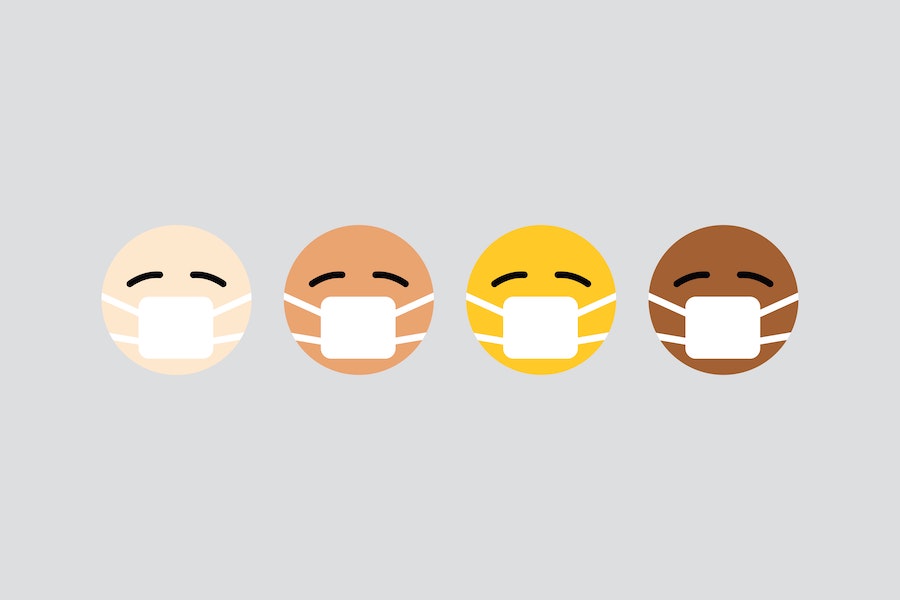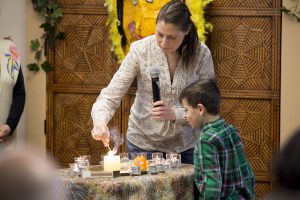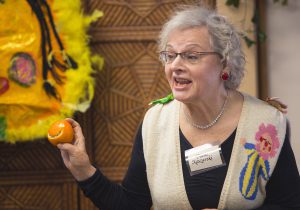By Dr. Mary S. Matsui

When will we be comfortable planning and participating in group activities: community weekend, commitment dinner, and skills auction? How will those events look in the near future?
Every member has their own set of circumstances, risk factors, risk-tolerance level, and the situation is constantly evolving due to many factors, including vaccination rate, mask wearing, seasonality, etc. This makes determining a fixed set of rules (one size fits all) about in-person events and activities difficult. For example, although being outdoors is not complete protection, it is, in general, less likely to lead to viral transmission. Because of this, many members have been able to enjoy group hikes and backyard picnics. At the height of the pandemic, there were no in-person activities, but with new safety rules in place, we now have “hybrid” Sunday platforms, which are a mix of virtual online and in person. So, how do we stay as safe as possible and still begin to regain our social interactions?
Outdoors safer than indoors; N95 safer than surgical mask
Epidemiological and animal studies indicate the importance of small, airborne droplets known as aerosols in transmission of Covid-19. A recent paper published in “The Lancet” summarized 10 pieces of scientific evidence concerning SARS-CoV-2 transmission. The list included results from epidemiological studies that pointed to higher indoor transmission of the virus compared to outdoors, and a higher rate of infections in hospitals where surgical masks and face shields were used when compared to hospitals where equipment such as N95 respirators were used. The coronavirus has been found to travel in building ducts, and to be transmitted through aerosol particles in the air at distances greater than six feet from an infectious source. One of the authors of the paper said that “It’s pretty clear now that people [with Covid-19] produce aerosols [while] speaking and talking and singing and breathing. Aerosols are like cigarette smoke, and being in a room with someone who is infectious is like being in a room with a cigarette smoker.”
Negotiating this next phase of the pandemic
In addition, they found that infectiousness may depend on environmental conditions. For example, higher intensities of sunlight, higher temperatures, and higher humidity levels accelerate the decay of the virus’ infectiousness. These findings are consistent with epidemiological studies suggesting that SARSCoV-2 thrives better in winterlike conditions. Other important factors include the amount of virus that is exhaled by infected individuals, and how much viral load needs to be taken in by an uninfected person to contract Covid-19.
As an ethical society, we are thoughtful of others. To “mask and vax” isn’t just for you—it’s to keep those around you safe. The approved vaccines have been found to be overwhelmingly safe and effective. As we negotiate this next phase of the pandemic, the ECS Re-Entry Task Force will be carefully establishing rules for participation at many different society events. I found that the Canadian COVID Risk Visit Calculator (from the Canadian National Institute on Aging) is a thorough, helpful tool that can be used to help make decisions about your attendance at group events. It highlights the considerations most important to keeping you and others safe. You can reach it through this link: https://covidvisitrisk.com/riskscore-english.html Every visit, gathering, and meeting is different. It’s all about risk reduction.

Covid-Era Decision-Making for Group Events*
It’s all about risk reduction
(Thank you to our Canadian neighbors)
- Covid-19 vaccinations: A vaccination against Covid-19 is one of the best measures to reduce the risk of severe outcomes from Covid-19. Having everyone involved in a visit or a gathering fully vaccinated, including a booster, against Covid-19, once possible to do so, is ideal before visiting or gathering with others.
- What is the living situation of the persons visiting or gathering with each other?
- What will the environment be for the visit or gathering? Is the visit indoors or outdoors? Indoor visits pose higher risk for becoming infected than outdoor visits, because potentially infectious respiratory particles can build up more easily when ventilation is poor or there are a lot of people in the space. Outdoor visits are considered lower risk because they allow for greater air flow, reducing the risk that respiratory particles with the virus will be inhaled by others. If visiting indoors, current evidence suggests better ventilated indoor spaces have lower risk of Covid-19 transmission compared to poorly ventilated spaces. If meeting indoors is necessary, larger rooms with all windows and doors open and air filtration via a portable air-filtration device or HVAC systems are preferred. Will people be able to take additional precautions during the visit? Washing one’s hands, wearing a well-fitting mask, and the cleaning and disinfection of high-touch surfaces and objects will all reduce one’s risk for becoming infected.
- Wearing a well-fitting mask remains an important public health measure, particularly in indoor settings, to reduce the spread of Covid-19. In general, multiple layers are preferred and masks should be tight-fitting with no gaps or valves. Examples of protective masks include respirators (e.g., N95, KN95), or triple-layer medical masks. Evidence currently suggests that cloth masks are the least effective at providing protection against the highly transmissible Omicron variant. In general, while non-medical masks can help prevent the spread of Covid-19, medical masks and respirators provide better protection. Fit is important for all types of masks. Even when not required, choosing to wear a mask can help protect you and others, especially those who are at greater risk of serious outcomes if they become ill with Covid-19, such as those who are immune-compromised or those who are ineligible for the Covid-19 vaccine. If the space will not allow for at least six feet between people, this creates a higher risk for becoming infected. If people with cognitive or memory impairments will be in attendance, which may make wearing a mask and physical distancing challenging, this creates a higher risk for becoming infected. If children will be in attendance, who may not be able to follow the rules of mask wearing or physical distancing, this creates a higher risk for becoming infected.
- How many people are expected to participate in the visit or gathering?
- What is the length of time of the proposed visit or gathering? The longer the visit with others, the greater the risk of becoming infected.
- What activities will people be taking part in while visiting or gathering with each other?
- Is everyone being tested for Covid-19 before visiting or gathering with each other? If all participants obtain a negative test for Covid-19 before the visit, this can also reduce the risk of visiting or gathering.
- While using rapid testing can be another key component of a safe visit, individuals should also take other appropriate precautions (i.e., wearing well-fitting masks, getting vaccinated, meeting outdoors, etc.) and not rely solely on this approach. While a negative test indicates that an individual likely did not have detectable Covid-19 at the time of test, they could still be infected and their status may change between the time of the test and the visit. A false negative Covid-19 test may also occur if a test was not done correctly or if a person has Covid-19 but is not yet shedding enough virus to test positive and may become infectious after the test. Therefore, rapid testing should ideally be conducted as close to the visit as possible.
- What are the chances that people have recently been exposed to Covid-19? (work, neighborhood, friends, etc.)
- Every visit, gathering, and meeting is different. Consider re-assessing your risk level and your comfort level with risk as your situation changes.
* Gently revised from the original.
Mary S. Matsui is a longtime member of our Ethical Culture Society and a member of the Society’s Reopening Task Force. She holds a PhD in cell and molecular biology from the Mailman School of Public Health, Columbia University, and is semi-retired after many years of research in photobiology, air pollution, dermatology, and human nutrition.


